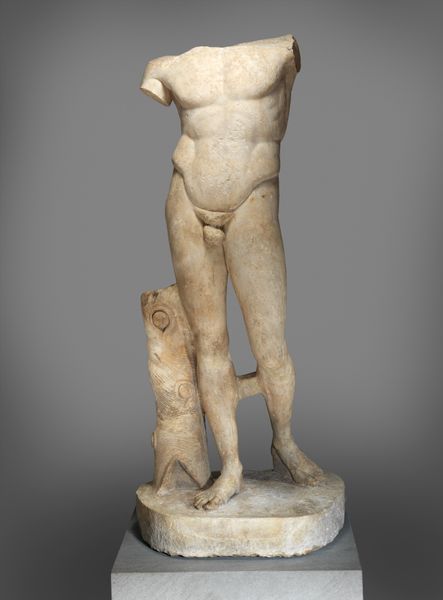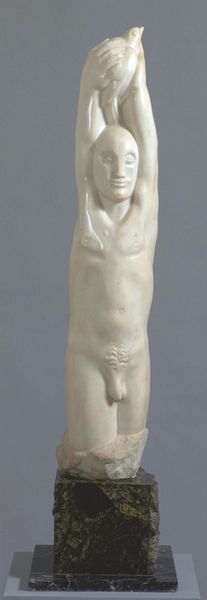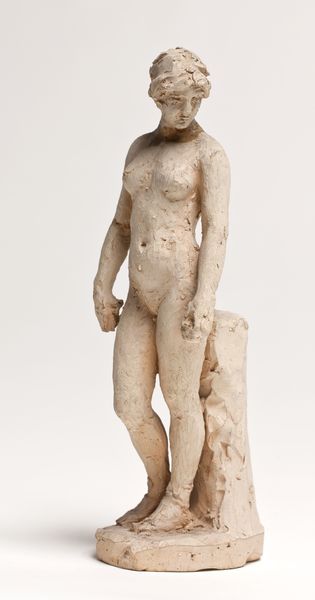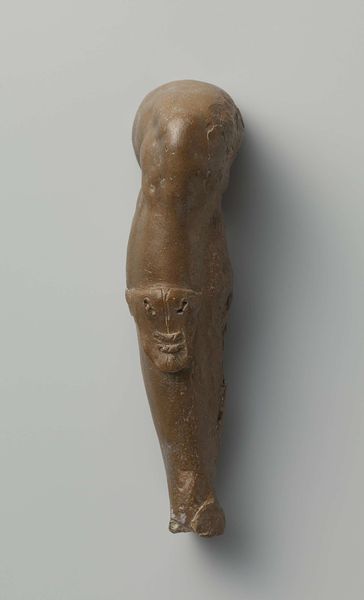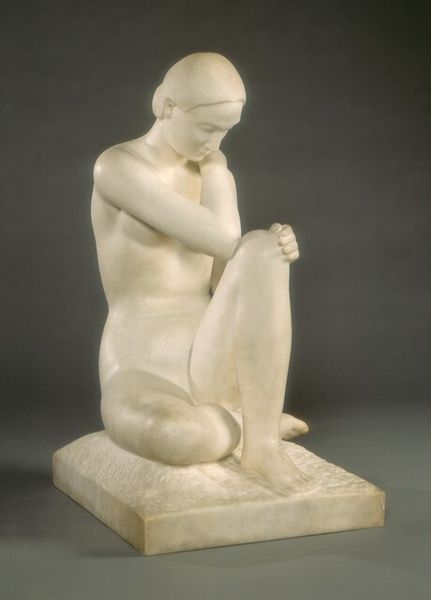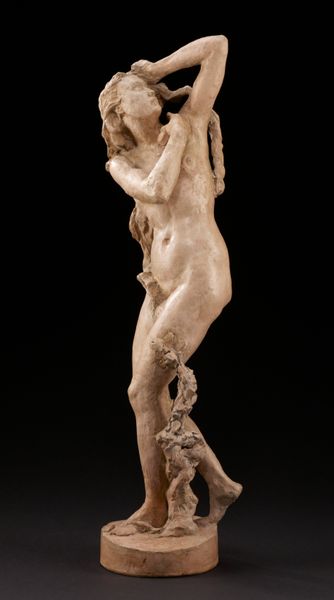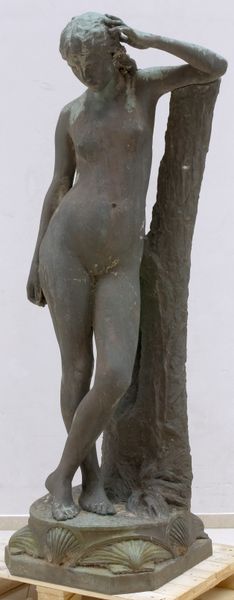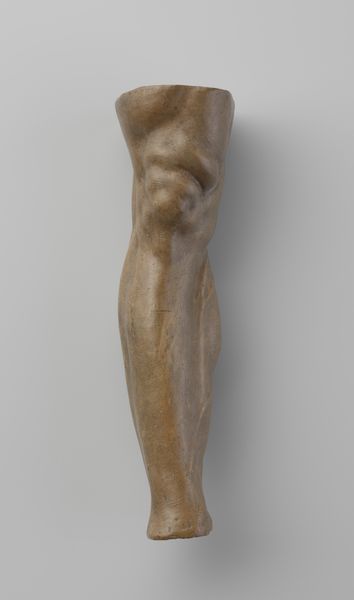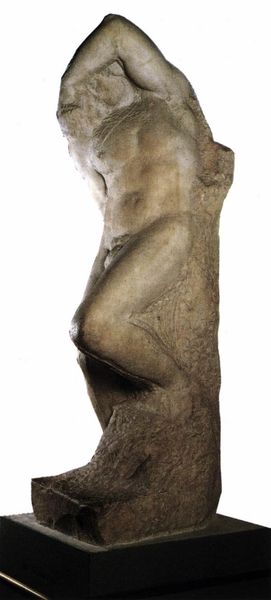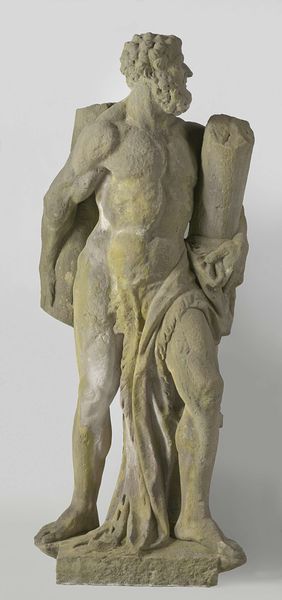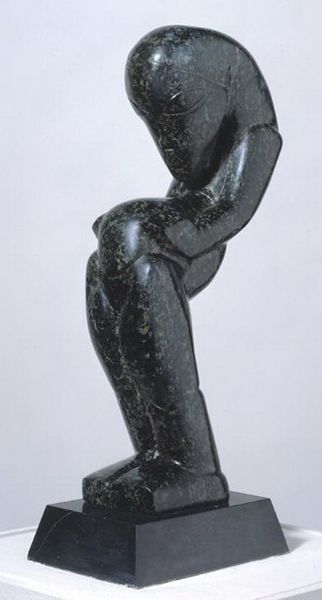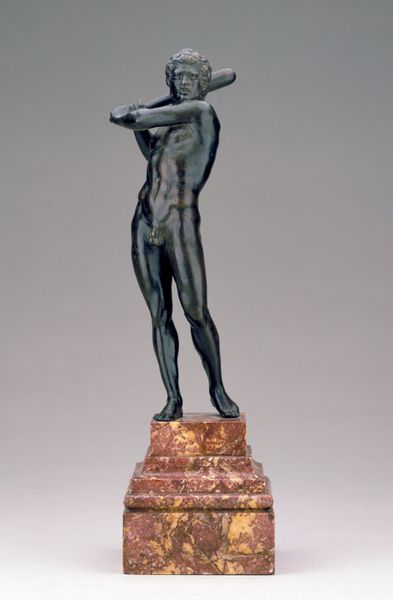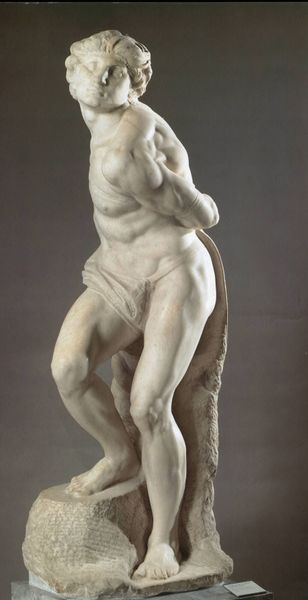
Dimensions: object: 1005 x 202 x 247 mm, 55.6 kg
Copyright: CC-BY-NC-ND 4.0 DEED, Photo: Tate
Editor: Here we have Eric Gill's 'St Sebastian,' a stone sculpture in the Tate collection. I'm struck by the weight and the almost industrial feel of the material. What can you tell me about it? Curator: The carving itself embodies a tension. Gill, deeply religious, embraced both faith and the physical act of making. Consider the stone: it’s not just a medium but a testament to labor. How does this materiality affect your understanding of the saint's martyrdom? Editor: I guess it grounds it, makes it less ethereal, more about the real suffering of a body. Thanks, that's given me a new way to look at it. Curator: Exactly. It’s a reminder that art, even religious art, is always shaped by material conditions and human effort.
Comments
Join the conversation
Join millions of artists and users on Artera today and experience the ultimate creative platform.
tate 6 months ago
⋮
St Sebastian miraculously survived the arrows intended to kill him as punishment for his Christian faith. He had long been a favourite vehicle for the depiction of the male nude. This work was commissioned from Gill, who was a Roman Catholic, by Marc-André Raffalovich, a friend of Oscar Wilde. Though Gill does not include the arrows, thus emphasising the relaxed sensuality of the saint’s languid pose, the sculpture also recalls a memorial monument. Heroic nudes were common on war memorials of the 1920s and the theme of St Sebastian might seem a fitting symbol for the more recent martyrdom of the war dead. Gallery label, September 2016
